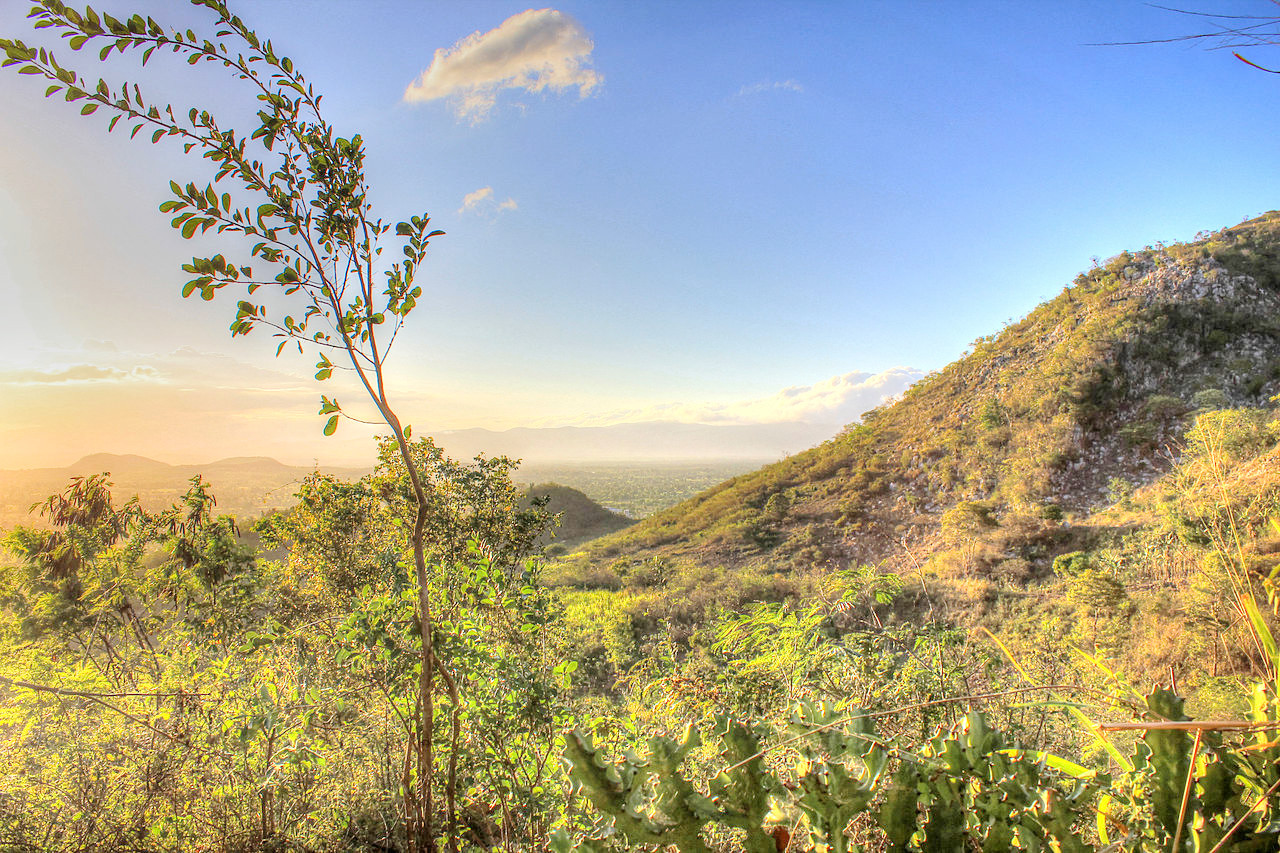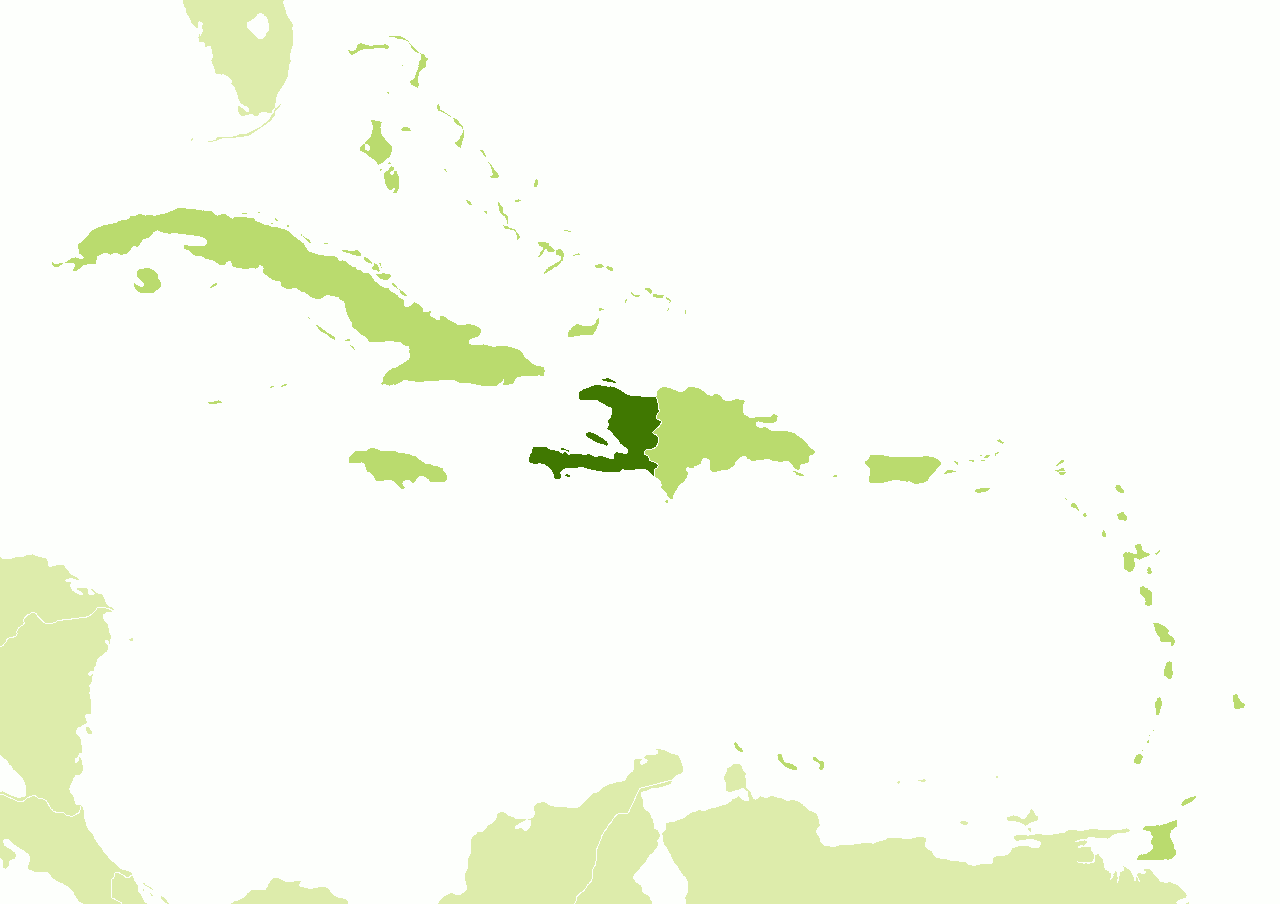The Climate of
Haiti
 Sunset on the mountain near Pignon
Sunset on the mountain near Pignon
Climate Map
 Climate map of Haiti
Climate map of Haiti
What is the climate of Haiti like?
Haiti occupies the western third of the large Caribbean island of Hispaniola; it has a land border with the Dominican Republic. It is a little larger than Wales or the state of Maryland and lies east of Cuba and Jamaica in the central Caribbean.
Haiti enjoys a tropical climate, which changes depending on the season and altitude. Port-au-Prince ranges in January from an average minimum of 23°C (73°F) to an average maximum of 31°C (88°F); in July, from 25 to 35°C (77–95°F). Temperatures are generally lower in highland areas.
The period from December through February is generally a dry season with little or no rainfall. Most of the country has a major rainy season in the spring, April to June, and minor rains in the fall, September to November.
There are many local variations in rainfall depending on altitude and location, with rain heavier in some of the lowlands and on the northern and eastern slopes of the mountains. The north coast is wetter than the south. Port-au-Prince is representative of the temperature and rainfall in the lower districts of the island. Afternoon humidity is rather lower than is usual on the coast in the Caribbean. This may be caused by a föhn effect as the moist northeast trade winds are drawn across the mountains in the interior.
Rainfall ranges from 300 millimeters in the northwest to more than 3,000 millimeters (120 inches) on Pic de Macaya in the high mountains of the southwest. Port-au-Prince receives an average annual rainfall of 1,350 millimeters (53 inches). One quarter of the country has annual precipitation less than 1,200 millimeters (48 inches). Most areas have at least 1,000 millimeters of annual precipitation, and a substantial percentage of the country receives 1,500 millimeters (60 inches) or more.
Haiti is subject to periodic droughts, floods, and hurricanes.
| Climate data for Port-au-Prince | |||||||||||||
|---|---|---|---|---|---|---|---|---|---|---|---|---|---|
| Month | Jan | Feb | Mar | Apr | May | Jun | Jul | Aug | Sep | Oct | Nov | Dec | Year |
| Average high °C (°F) | 31 (88) | 31 (88) | 32 (90) | 32 (90) | 33 (91) | 35 (95) | 35 (95) | 35 (95) | 34 (93) | 33 (91) | 32 (90) | 31 (88) | 33 (91) |
| Daily mean °C (°F) | 27 (81) | 26.5 (79.7) | 27 (81) | 28 (82) | 28 (82) | 30 (86) | 30 (86) | 29.5 (85.1) | 28 (82) | 28 (82) | 27 (81) | 26.5 (79.7) | 28.0 (82.3) |
| Average low °C (°F) | 23 (73) | 22 (72) | 22 (72) | 23 (73) | 23 (73) | 24 (75) | 25 (77) | 24 (75) | 24 (75) | 24 (75) | 23 (73) | 22 (72) | 23 (74) |
| Average precipitation mm (inches) | 33 (1.3) | 58 (2.3) | 86 (3.4) | 160 (6.3) | 231 (9.1) | 102 (4.0) | 74 (2.9) | 145 (5.7) | 175 (6.9) | 170 (6.7) | 86 (3.4) | 33 (1.3) | 1,353 (53.3) |
| Source: www.haiti.climatemps.com | |||||||||||||
References
- E. A. Pearce, Charles Gordon Smith, (1990) The Hutchinson World Weather Guide, John Murray Press. ISBN 1859863426
- Timothy L. Gall, (ed.), (2003), Worldmark Encyclopedia of the Nations, Eleventh Edition, Thomson Gale
- Federal Research Division, Library of Congress, (2001), Dominican Republic and Haiti: country studies. Claitor's Pub. Division. ISBN 0844410446
- Hugh Chisholm, (ed.), (1911), Encyclopædia Britannica, Eleventh edition, Cambridge University Press
The Climate of
Haiti

In summary:
The climate is tropical, with some variation depending on altitude. The average annual temperature ranges from 22 to 30°C (70 to 86°F), but is generally lower in highland areas.
Rainfall increases with elevation; the higher the region, the greater the rainfall. Haiti has two rainy seasons: April through June and September– through November.